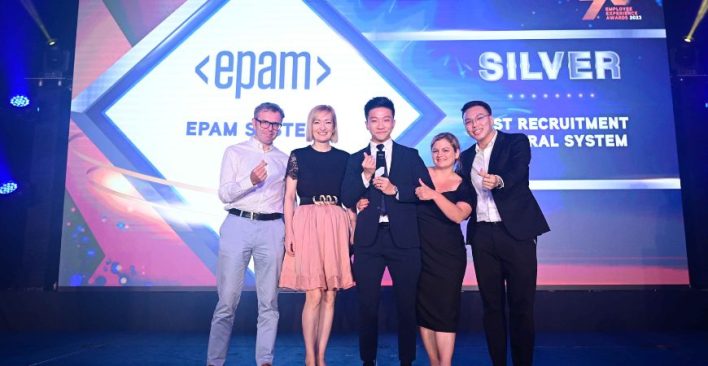Second Thoughts – My 5 Problems With Recruitment

This blog is part of a series. You can read the next instalment, here.
Six years ago I left the world of recruitment. I’d had a great time as an online sourcing specialist, tracing footprints through the web, and I knew that there was a lot of change coming very fast to the industry. The digitalisation of recruitment was beginning to take off properly and very soon we’d see no need for resumes, candidates would be closely networked to companies and people they were interested in working with, and the experience for all involved would be so much better.
A year ago I moved back to the world of recruitment. I’d had a great time specialising in innovation management and Design Thinking and I knew that I’d be walking into a radically different industry.
The thing is; I didn’t.
Sure it had moved on, there were great steps forward in the world of employer value propositions, new technology was moving in, being tied together in interesting ecosystems and people were starting to really look into artificial intelligence.
But as a whole it was completely recognisable. The industry hadn’t moved anywhere near as far as I had expected it would.
Attending conferences I heard much of the same content I’d heard all those years ago, and instead of waving pitchforks and yelling “Show us something new!” the audiences were diligently writing notes – “employee value propositions are useful, remember to email Robyn about this”.
What had I expected? I guess it was the ‘whizz bang wonderment’ that meant that people no longer needed to apply for a job because it was so obvious that they were the right person for the role. The mapping out of career paths between organisations and industries to craft really well rounded people who would, in turn, craft a new and brighter future for the world.
One requisition, one candidate, one hire; that had been my dream as a sourcer and it was nowhere to be found.
Looking beyond my first thoughts I think I’ve uncovered a few fundamental problems. I’m not going to attempt to solve them now (though I’ll give it a go in future posts) I’m just going to put them out there for now. Feel free to disagree with me, without debate we’re going to be doomed to stay the same, but if you do please let me know.
Problem 1: We don’t share enough
I’m a firm believer in knowledge flows rather than knowledge accumulation. If we share knowledge we grow knowledge. Finding the best people to share with is the key to success…
Problem 2: The recruitment experience is broken
No one enjoys it. Recruiters find the processes cumbersome, hiring managers find it slow, and candidates find it painful. Personally I fail to see how this is remotely sustainable, yet it has been sustained for many years and looks to be rolling on for many more. How much longer will we all just keep calm and carry on instead of fixing it.
Many of us are actively working to change the system, and so often we turn to the glorious silver bullet that is technology. That’s not the solution though it may turn out to be part of the solution, and that leads me to problem three.
Problem 3: We’ve only just begun the digital journey
Simple digitisation is taking a process/product/thing and copying it into the digital world. Think YellowPages replaced by an online YellowPages; quicker to search but fundamentally the same. Think folders of resumes replaced by an ATS of folders. Of resumes.
Disruptive digitisation takes this much further, often with unexpected results. The rise of the civilian journalist changed our view of news, for better or worse, and information moves faster and further than ever before.
At the moment the mainstream is still in a replication phase for recruitment. Simply shifting something into zeroes and ones doesn’t necessarily make it better, but it does make it easier to break up and disrupt.
Problem 4: We get hung up on words and phrases
“Mobile first” is the cry and we all flock to update careers pages and advertisements to ensure they can be viewed on a smart phone. Now, I’m not against making things work on a small screen but the folk at CoTap got it right; “mobile” means people are mobile. They change devices and locations continually through the day and on into the night. If you’re really looking for a mobile solution ensure it’s one that can seamlessly move from one medium to another.
“Big data” is another… you really don’t want big data, all you want is the insight that it could bring. The simplest solution would be throw it all at Kaggle, they did manage to map dark matter throughout the universe, but then “security” and “privacy” get invited to the party and suddenly it’s all too hard again. If only there was a data scientist on your team…
Problem 5: We keep employing and promoting recruiters
Ok. So this is probably going to be the most contentious point but I stand by it. I will explain though.
This isn’t because recruiters are bad at their jobs, they’re really not. This is because the job we want them to do is fundamentally wrong (see problem 2).
On top of that businesses (and the world) are ruled by the accountants who’s siren song of “faster, cheaper, faster, cheaper” is the music we are continually forced to march to.
A disclaimer
Before I go, please note that throughout I’ve been making sweeping generalisations for effect. Of course the industry is changing for the better. Of course not everyone is forced to look at nothing but the numbers.
As I said at the start I’m going to try to answer these problems in future posts and I’ll be making sweeping statements throughout. I’m lazy that way but I’d love to talk specifics with you…
This blog is part of a series. You can read the next instalment, here.
Related articles
4 Responses to “Second Thoughts – My 5 Problems With Recruitment”
Leave a Reply
Sign up to our newsletter
Get a weekly digest on the latest in Talent Acquisition.
Deliver this goodness to my inbox!



I agree with much of what you say, but you overlook a fundamental and over-emphasize the process, an increasingly common failing of many HR professionals in my view. First, recruitment is about human beings and human interaction. No data or technology on the face of the earth now or ever will get beyond that fundamental human need to get face to face and identify the intangibles: do we click? can we work together? who are you? Organisations do not work on stated policies, processes, job descriptions and resumes; they work on the Unspoken Ground Rules) UGR’s that have driven human society since we roamed the planet as hunter/gatherers – and the prime UGR is, always was and ever more shall be: “this is how we do things around here”. No amount of terrific technology, candidate tracking and career following is going to replace that need. Recruitment and HR generally are being too easily swept up into the mania for technology and forgetting that our stock in trade is people! What we bring to the table is the ability to optimise human potential for the benefit of BOTH the individual and the organisation. Second, the truth is that most hiring managers in most organisations haven’t the foggiest idea of what they really need in a new employee and then no idea of how to go about identifying it. This comes back to the fact that most managers are promoted into management for all the wrong reasons and then left to flounder around with no idea of how to do it. And, sadly, HR is as much to blame for this as anyone, because HR is now primarily populated with process driven introverts who don’t actually much like people – so they take refuge in excessive process, data, rules and metrics.
Hi Philip,
I completely agree with you about the move away from human interaction as the biggest problem of all. There is no doubt in my mind that the “do we click?” and “can we work together?” questions are the ones that define the right hire.
Given the scale of recruitment in many organisations getting to that point quickly and effectively can be a huge problem; especially when we force people into the systems we have.
Your point about UGRs is very well made. Companies operate one way because that is what has worked for them. If we look at recruitment within startups it is generally the CEO who makes all the face to face decisions – can I work with this person? Will they grow with me?
But there’s a tipping point where it is no longer seen as viable for this to happen and the need for an HR team becomes apparent.
When this happens the game changes and it becomes a process based approach. To be able to work within any organisation of scale a process needs to be in place, but that process needs to be fundamentally redesigned from what we have.
I strongly believe that if we take the step before we could completely redesign recruitment to ensure that the human interaction remains core. Process should be there to help things happen, not get in the way or be something people can hide behind.
I do think that there is an opportunity for for technology within the solution, but tech isn’t the solution in itself. Hiring Managers don’t always know what they need, predictive analytics and assessment may be able to help. Strategy tends to get watered down as it moves through an organisation, cultural alignment or directional intensity tools may help ensure the original vision is delivered.
I really like your statement about optimising human potential for the benefit of both the individual and the organisation; I see this as our higher purpose, one that is often moved to simply fit one side of the equation (far more often than not the side of the organisation).
If we can get back to this being the reason we recruit we can start addressing the problem that brought me back to recruitment in the first place, that three quarters of the workforce is dissatisfied with their work. Having that many people unhappy is no way to operate a world.
Simon
I agree with much of what you say, but you overlook a fundamental and over-emphasize the process, an increasingly common failing of many HR professionals in my view. First, recruitment is about human beings and human interaction. No data or technology on the face of the earth now or ever will get beyond that fundamental human need to get face to face and identify the intangibles: do we click? can we work together? who are you? Organisations do not work on stated policies, processes, job descriptions and resumes; they work on the Unspoken Ground Rules) UGR’s that have driven human society since we roamed the planet as hunter/gatherers – and the prime UGR is, always was and ever more shall be: “this is how we do things around here”. No amount of terrific technology, candidate tracking and career following is going to replace that need. Recruitment and HR generally are being too easily swept up into the mania for technology and forgetting that our stock in trade is people! What we bring to the table is the ability to optimise human potential for the benefit of BOTH the individual and the organisation. Second, the truth is that most hiring managers in most organisations haven’t the foggiest idea of what they really need in a new employee and then no idea of how to go about identifying it. This comes back to the fact that most managers are promoted into management for all the wrong reasons and then left to flounder around with no idea of how to do it. And, sadly, HR is as much to blame for this as anyone, because HR is now primarily populated with process driven introverts who don’t actually much like people – so they take refuge in excessive process, data, rules and metrics.
Hi Philip,
I completely agree with you about the move away from human interaction as the biggest problem of all. There is no doubt in my mind that the “do we click?” and “can we work together?” questions are the ones that define the right hire.
Given the scale of recruitment in many organisations getting to that point quickly and effectively can be a huge problem; especially when we force people into the systems we have.
Your point about UGRs is very well made. Companies operate one way because that is what has worked for them. If we look at recruitment within startups it is generally the CEO who makes all the face to face decisions – can I work with this person? Will they grow with me?
But there’s a tipping point where it is no longer seen as viable for this to happen and the need for an HR team becomes apparent.
When this happens the game changes and it becomes a process based approach. To be able to work within any organisation of scale a process needs to be in place, but that process needs to be fundamentally redesigned from what we have.
I strongly believe that if we take the step before we could completely redesign recruitment to ensure that the human interaction remains core. Process should be there to help things happen, not get in the way or be something people can hide behind.
I do think that there is an opportunity for for technology within the solution, but tech isn’t the solution in itself. Hiring Managers don’t always know what they need, predictive analytics and assessment may be able to help. Strategy tends to get watered down as it moves through an organisation, cultural alignment or directional intensity tools may help ensure the original vision is delivered.
I really like your statement about optimising human potential for the benefit of both the individual and the organisation; I see this as our higher purpose, one that is often moved to simply fit one side of the equation (far more often than not the side of the organisation).
If we can get back to this being the reason we recruit we can start addressing the problem that brought me back to recruitment in the first place, that three quarters of the workforce is dissatisfied with their work. Having that many people unhappy is no way to operate a world.
Simon